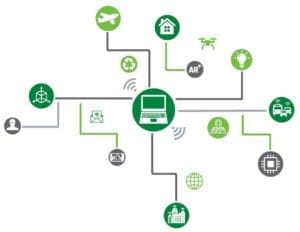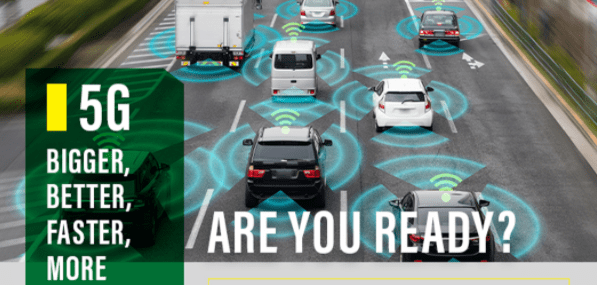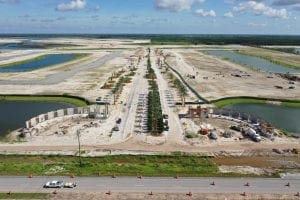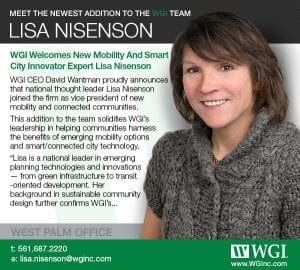
Taking a Look at Municipal Utility Districts
A MUD is a special-purpose district that provides infrastructure and public utilities to the residents of that district.
Learn from award-winning professionals — explore our whitepapers, blogs, and the latest industry updates.
Join our dynamic organization of engineers, land surveyors, landscape architects, environmental scientists, and architects!
Talk to a market leader today! We’ll answer any questions you have about our professional services.


5G: Bigger, Better, Faster, More — Are You Ready?
The 5G revolution will happen, but don’t buy everything the telecoms, cellular providers, and smartphone manufacturers are selling. While the major provider’s race across the nation to build out wireless networks in certain strategic locations, significant progress still remains for the average municipality and rural co-op. Developers have yet to fully leverage what this groundbreaking technology will ultimately unleash. Are you ready?
The 5G — Fifth Generation — is essentially wireless networking technology taken to the fifth power. Its evolutionary purpose is faster download and upload speeds, and reduced latency — the time it takes devices (from gadgets to vehicles) to communicate with wireless networks.
5G’s vast upside is expected to have a profound effect on the Internet of Things (IoT), with a predicted increase of connected “things” from 14.2 billion to 55 billion by 2027. The IoT market will then balloon to $2.4 trillion, according to Business Insider.
The result? Enhanced wireless access for people, improved road safety and traffic routing for vehicles able to “talk” to one another, smart homes, and “smart cities” where the IoT creates an efficient delivery of services such as utilities, flood protection, replacement of street lights, healthcare assistance/monitoring, and more.
Deployment of 5G does not merely involve an upgrade of existing 4G services. In fact, 5G is a constellation of different technologies, requiring a different implementation approach. Just one example — the high-band spectrum where 5G lives has a limited communications range and poor building-penetration characteristics. To this end, “small cell” 5G locations can provide more extensive and granular coverage in urban and local environments. Small cell locations, when built within 800 feet from one another, provide full coverage to the millimeter wavelength 5G spectrum. Each small cell relies on a fiber optic connection to supply the bandwidth required to maximize the potential of the 5G technology. WGI knows from deep experience these installations take precise planning and design, and require robust public outreach efforts to obtain buy-in.
From the planning, design, permitting, and installation of small cells, there’s plenty to consider when planning for a 5G deployment. For public owners looking to live in the next generation’s connected future, now is the time to plan. And for private-sector developers, it means embracing the notion that 5G will transform design and construction. From real-time field data collection and make-ready considerations supporting of construction services, to the networks of all devices, planning is critical throughout the life of the project.


And what about cities getting smarter? Cities must consider all major trade-offs in development of a publicly financed or owned network, or directly cooperating with telecom providers to determine where best to deploy 5G networks, and define their purpose. Equity is a major consideration, too. Who benefits and how? Are there under-served or unserved areas to be included and prioritized? Is lower population density in the rural areas of the county affecting feasibility?
Traffic and safety are always high priorities, and a well-deployed, smart connected-vehicle communication system along each route, can save lives. What about overall quality of life and commerce? While telecoms already installed infrastructure beneath many major streets, there are plenty of underserved areas. Bringing 5G technology and speeds to an important commercial corridor is essential so the largest number of people can utilize the next-gen evolution.
While 5G networks boast the wow factor, roadblocks to its installation vary from the complexities of millimeter-wave technology to so Current pole owners — legacy telecoms and rural co-ops — might not be envisioning the inevitable future needs and allowing a competitor to access their poles, hindering the widespread installation of 5G.
Look no further than what happened to Google Fiber a few years back in Nashville and several other cities. Google Fiber and the cities wanted to install its product. On the strength of a local OTMR ordinance — One-Touch Make-Ready — Google Fiber was primed to move forward by first installing its technology on poles owned by other utilities or telecom providers, while using its own contractors to make pole attachments for installing fiber and devices, while on a very compressed network-deployment timeline.
Ultimately some initial fiber programs began to falter for several reasons, including an inability to foresee the following factors:
Due, in part, to the early obstacles — like those in Nashville — placing fiber to support 5G and consumer demand for broadband accessibility prompted the FCC to adopt a corrective OTMR policy. The FCC announced in August 2018 that, “to enable broadband providers to enter new markets and deploy high-speed networks, access to poles must be swift, predictable, safe, and affordable. Pole access also is essential in the race to deploy fast 5G wireless service, which relies on small cells and wireline backhaul.”
At least 30 states now recognize the FCC’s jurisdiction over pole attachments. But other states self-regulate, so knowing local and state laws is critical when planning 5G network deployment. WGI’s experts have extensive permitting experience working with local governments, qualified contractors, and other engineering firms.
The federal government recognizes 5G’s importance and what it means for communications’ continued evolution. Federal funding is available for service providers committed to deploying fixed broadband and voice services to underserved areas. Through the Connect America Fund Phase II, the FCC hosted a reverse auction in 2018. The auction resulted in 103 bidders winning $1.49 billion over a 10-year support cycle to provide service to over 700,000 locations in 45 states.
But federal funding is not done — far from it. In 2020, through the Rural Digital Opportunity Fund, the FCC will host Phase I and Phase II auctions where it plans to award as much as $20.4 billion over a 10-year support cycle targeting over six million homes and businesses in rural areas entirely unserved by voice and broadband, bringing download speeds of at least 25 Mbps.
WGI can assist any public owner interested in applying for these funds. WGI is also well-positioned to be your trusted consultant in planning and deploying these rural, FCC-funded programs, especially in using innovative approaches such as LiDAR-based pole inventories and pole-load analysis for your make-ready considerations and engineering activities.
As a nationwide leader in providing technology based solutions for the planning and design of public infrastructure, WGI is prepared for the inevitable need to help clients through the coming communications transformation; to assist in planning, designing, and permitting of 5G networks; and helping cities or rural networks prioritize the public domain.
Already at the forefront of utilizing tomorrow’s technology today, when 5G is truly here WGI’s clients will immediately see the benefit. The future is fast approaching. We are ready to help you be ready!
WGI knows that to innovate and evolve, we must constantly invest in technology, people, and strategic thinking that expands our frontiers. WGI is driving our profession’s transformation in how we envision, design, and deliver infrastructure.
We are committed to the ever-expanding nexus of innovation, sustainability, and resiliency through capital commitments that range from multi-dimensional information modeling to augmented reality to mobile LiDAR — and always more.
For more information about this study or to have a conversation with one of our experts, please contact us:

5G: Bigger, Better, Faster, More — Are You Ready?

WGI is a national design and professional services firm leading in technology-based solutions for the construction of public infrastructure and real estate development. At WGI, we’re providing Tomorrow’s Infrastructure Solutions Today.

A MUD is a special-purpose district that provides infrastructure and public utilities to the residents of that district.

If your city hasn’t begun planning for autonomous vehicles, it’s not too late — but the time for urgency is fast approaching.

Construction is underway at Avenir – a new Landstar Development multi-use, master plan community that will have 3,725 homes and 250 townhomes.

Explore the intricate landscape of Virginia’s data center regulations and upcoming policy efforts in our latest Policy Puzzle post, shedding light on the challenges and considerations for managing the world’s largest concentration of data centers.

This addition to the team solidifies WGI’s leadership in helping communities harness the benefits of emerging mobility options and smart/connected city technology.

WGI transformed Banyan Boulevard in West Palm Beach, FL, into a safe, comfortable, complete street.
You’ve been searching for a place like WGI. We look forward to meeting you soon.
Sign up to receive emails to hear our latest news and achievements in our monthly newsletter.
Enter your zip code, and we’ll personalize your experience with local projects, office locations, team members, and more.
WGI supports its associates with meaningful opportunities for growth, strong benefits and perks, while we work collaboratively with clients and co-consultants to shape and improve communities.






WGI is a dynamic organization with opportunities nationwide for engineers, land surveyors, landscape architects, environmental scientists, and architects.